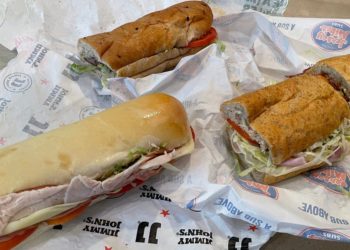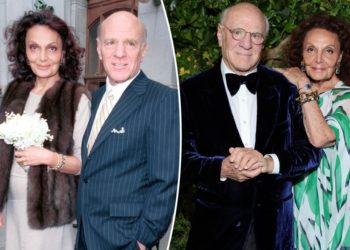The Los Angeles County Museum of Art recently announced that the public would finally be able to preview its new, long-awaited $720 million building starting in June. There will be tours for members and donors along with musical performances by the composer and bandleader Kamasi Washington.
But there still won’t be any art in the museum, which is not scheduled to open until April 2026. To answer the question of how the building, Geffen Galleries, will be organized and what will be on view, a reporter sat down with four of the museum’s curators and their boss, LACMA’s director, Michael Govan.
The discussion offered a glimpse into the animated debate that the museum’s 45 curators have been engaged in over the last five years, reimagining how the institution should present art in its curvaceous, Peter Zumthor-designed building crossing Wilshire Boulevard.
Their different disciplines will relate to each other in fluid new ways, they explained, challenging business as usual.
“It allowed us to sort of start from scratch,” said Leah Lehmbeck, the head of the departments of European Painting and Sculpture and American Art, by “rethinking traditional silos and hierarchies.”
In undertaking this project, LACMA has joined a wholesale re-examination of the traditional Eurocentric, white-male-dominated canon that is currently underway at institutions around the United States that historically marginalized other voices and perspectives.
The Museum of Modern Art moved away from discipline-specific galleries with its 2017 expansion project, for example, rehanging the collection with a focus on inclusivity that encompassed lesser-known female artists and artists of color.
The Metropolitan Museum of Art expanded beyond a Western European lens with its Kerry James Marshall retrospective at the Met Breuer in 2016 and commissions of contemporary exhibitions by people of color in 2019 — including the Cree artist Kent Monkman and the Kenyan-born artist Wangechi Mutu.
In addition, the Met’s refurbished Michael C. Rockefeller Wing, which is set to open this month, now presents Africa, the Ancient Americas and Oceania as three distinct areas, once grouped together under “primitive.” And the design for its new wing for Modern and contemporary art by the Mexican architect Frida Escobeto, unveiled in December, will emphasize the links between contemporary and historical works, and those from different regions, disciplines and civilizations.
At LACMA, Govan asked the curators to free themselves from conventional categories and forge new connections. “There is this whole false idea we’ve grown up with in our museum world that there is an ‘art history’ singular,” Govan said. “That’s why things get left out, because it all has to support a story.
“This,” he added of LACMA’s new building, “was specifically designed to disrupt that possibility.”
Zumthor’s new curvilinear structure will situate the art on one level, conveying the lack of a hierarchy among the disciplines.
As an overarching theme and “kind of muse,” Lehmbeck said, the curators will highlight the idea of oceans, with art related to the Atlantic, the Mediterranean, the Indian Ocean and the Pacific. “It’s sort of loosely geographical,” she added, “where you have inherently baked into it these areas of crossings, connections, diasporas.”
Govan was excited by that notion. “Culture is almost always organized by land masses and by longitudes,” he said. “All of the 19th century was about categorization,” while this concept, he added, “was around the opposite: migration, whether it was forced by slavery or through commerce. It was all about exchange.”
Curators are conceiving of exhibitions by drawing on LACMA’s entire encyclopedic collection.
“We were encouraged to make them cross-departmental — to use all of your expertise and reinvent everything, which was both terrifying and thrilling,” said Britt Salvesen, head of the departments of Photography and Prints & Drawings. “That meant brainstorming ideas based on the objects we’re already most familiar with, but digging deeper and finding things that maybe we hadn’t ourselves worked with.”
This open-ended approach took some getting used to. “Once you start questioning these very hierarchical and dominant narratives, you actually need to begin to practice differently,” said Diana Magaloni, a deputy director at the museum and head curator of the department of Art of the Ancient Americas. “The way you curate, the way you talk with your other colleagues, the way you plan for exhibitions, needs to be open to a dialogue and to questioning.”
Whereas Europe had historically dismissed ancient Colombian art as crude and superstitious, for example, LACMA, in its 2022 show “The Portable Universe: Thought and Splendor of Indigenous Colombia” worked closely with the Arhuaco, an Indigenous people living in the mountains of the Sierra Nevada de Santa Marta, acknowledging the art’s meaning and relevance.
With the collaborative nature of LACMA’s curatorial re-examination, Sharon S. Takeda, the senior curator and head of the departments of Costume and Textiles and Japanese Art, said it has been refreshing to be considered on a par with other departments. “We’ve had to fight to not be the poor cousins and ask our colleagues to allow us to put textiles or fashion in their permanent galleries,” she said, adding that in the new building “there will be more costumes and textiles on display at once than any time in the history of LACMA.”
The new galleries will feature an exhibition of the traditional Kashmir shawls long treasured in Indian courts — examining their popularity as a luxury export to Middle Eastern and European markets by the late-18th century — and their later influence on new industries in the British Empire, France and Iran.
“We’ll be including mannequins dressed with 19th-century Western dresses; one accessorized with a Kashmiri shawl and one with a shawl made for the Western market,” Takeda said, “and male garments: a traditional Indian Kashmir coat — sherwani — and robes made in Kashmir for the Turkish and Central Asia market, as well as paintings and works on paper.”
The Los Angeles Times critic Christopher Knight has criticized LACMA’s renovation for reducing its overall gallery space. Govan said that there had in fact been 110,000 square feet for art in the four aging former buildings that were replaced in the project, and that there would be the same amount of space in the modern new structure.
The museum has yet to disclose precisely which pieces of art visitors will see when the building opens. But likely to be on view are the artworks for which LACMA has become best known, such as its Ardabil carpet; Paracas mantles, woven by pre-Columbian people in Peru; the painting “Magdalen with the Smoking Flame,” by Georges de La Tour, from around 1635; the Cantor Sculpture Garden by Auguste Rodin; and Cathy Opie’s photography.
Plans call for a print from Opie’s 1990s “Freeway Series” to be included in a section on Southern California, featuring a variety of artists who have depicted and defined the region’s urban landscape.
The building, which Govan described as “three football fields long,” will contain three types of galleries: those with natural light, for sculptures, ceramics, three-dimensional objects and digital photography; “courtyard galleries,” which combine dimness and light; and internal, boxed-in galleries for light-sensitive artwork.
The building’s circulation is designed to foster exploration rather than dictate one specific journey thorough it.
Walking the perimeter, visitors might time-travel through Greek and Roman statuary and then experience a moment from the ancient Buddhist civilization of Gandhara, which flourished in northwest Pakistan. “We’ve really pushed to make the point clear that there are multiple histories that can be told of a single time or place,” Lehmbeck said.
And even when LACMA shows Eurocentric material, it will present alternative viewpoints, Salvesen said.
In planning to exhibit a collection of prints of Neo-Classicism, for example, “there were artists critiquing this movement at the time it was happening,” Salvesen said. “You have Goya coming in and dismantling this glorification of reason and rationality and perfection and instead saying in his own moment that there are these messy emotions in politics, and inequities.”
Magaloni, who also serves as director of LACMA’s conservation center, said Latino identity will be “completely integrated into the building,” with works by Latin American artists visible upon entrance.
The new space is intended to satisfy aficionados as well as newcomers, the curators said, by providing both sophisticated scholarship and accessible presentation. “People who are really art history savvy — they’re going to find themselves challenged,” Takeda said. “People who have never been into a museum or younger people — they’re not going to be intimidated.”
LACMA also hopes that the new building becomes a city hub — a destination where tourists and locals can gather on the plaza, browse in the museum’s store or meet at one of three new eateries: Ray’s and Stark Bar, on the south side of Wilshire, and a cafe on the north side.
“You make your own path, you decide to spend a little time, have a cup of coffee,” Govan said. “It’s meant to keep people hanging around.”
Robin Pogrebin, who has been a reporter for The Times for nearly 30 years, covers arts and culture.
The post As LACMA Gets a New Look, the Art Inside Will Change, Too appeared first on New York Times.




